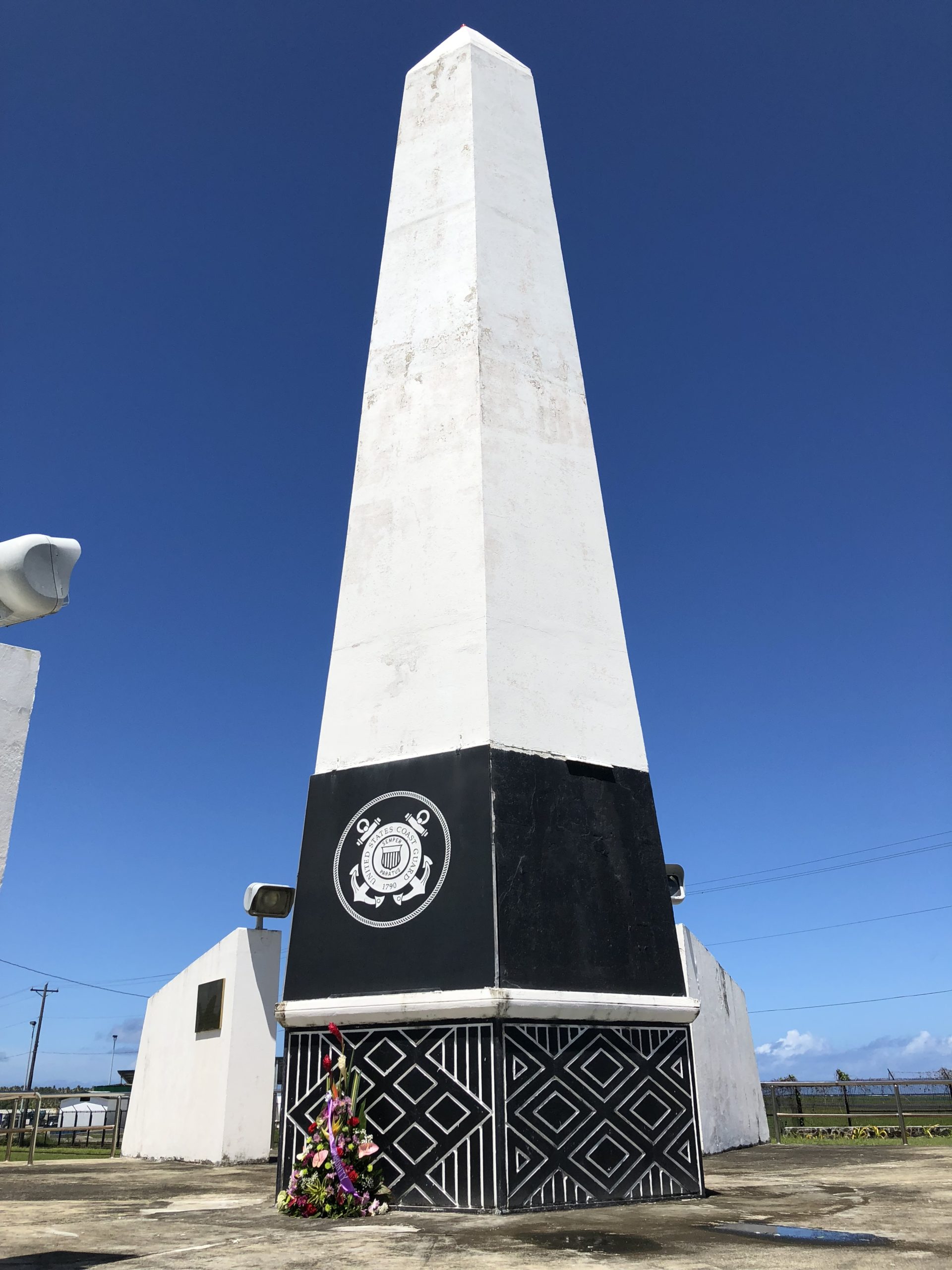10/13 Pago Pago, American Samoa (12)
>> Hi. I am now at the grave site of Grandpa Joseph Giahopman. He died in the Korean War. He also served in World War II, and he died in Korea in 1951. It’s kind of hard to see, but it may be that, I don’t know, maybe married to a Samoan woman, but was buried here because it says from New York, so he’s definitely not Samoan, right?
>> Yeah, probably not …
>> Just a haole. Yeah.
>> Okay. However, look at how beautiful this place. What is this called? It’s Pago Pago?
>> Pago Pago.
>> What is the water called, body of water.
>> It’s Pago Pago Harbor.
>> Pago Pago Harbor.
>> Okay, and it is beautiful. It’s not raining today anymore, but I also found something very interesting, and so I’m going to show you, so I noticed that grave marks with Korean characters. Of course, me being Korean, I’m like, “What is that? That is very weird,” and David told me … He’s with the Historical Society, tells me that the fishing industry, the tuna industry became very popular in what year?
>> In the early 1950s.
>> 1950, so that’s the …
>> Same time.
>> … same time of Korea War. Oh, my goodness, and so a lot of fishermen that came here were Korean, so when they were sending American Samoans to fighting in Korea, they were here fishing, and many of them died, so they asked for a plot of land where they could bury the fishermen, and so here they are. It’s amazing. Wow. It says Satala Korean Fishermen cemetery, “[FOREIGN LANGUAGE],” so they are all these fishermens raised here. It is so amazing, so the connection between, I guess, the Korean people and American Samoans are not just … has not ended just in terms of the Korean War, but the fishing industry because I want to give a shoutout to the StarKist Corporation, which is now owned by Cowon, and they sponsored our lunch today with the veterans, and so I’m very proud because it makes the veterans very proud knowing that they sacrificed for people who work really hard to become so prosperous and to give back and to say thank you, and so that’s why I’m here, to say thank you, and so here once again, thank you to my grandpa. I came because you didn’t return home and on this beautiful harbor and this mountain, so talofa everybody and [FOREIGN LANGUAGE] 감사합니다 and thank you. Bye.
